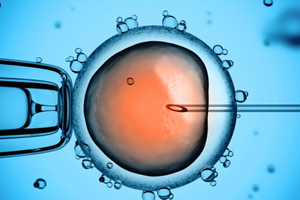
ASSISTED EMBRYO HATCHING USING A LASER SYSTEM
Assisted embryo hatching using a laser system was first documented in 1990. The team using this method demonstrated a significant increase in the likelihood of implantation in patients referred for in vitro procedures.
Why Assisted Hatching?
During its maturation, each egg produces its own transparent spherical shell called the zona pellucida. It has a very important protective function during fertilization, as it allows only one sperm to enter and fertilize it. After fertilization, the zona pellucida mechanically protects the embryo as it travels to the uterus. Once inside, after a few days, it multiplies its cells, develops, and it is time to be released from the shell so it can implant in the uterus. The embryo produces an enzyme called Lysine, which makes a small hole in the shell through which it emerges (hatches). The amount of enzyme and the thickness of the zona pellucida determine whether the embryo will break through the shell to be released.
An artificial culture environment, such as any in vitro laboratory, changes the mechanism of hatching, and the embryo has to use more energy to come out. In addition, in embryos with disorders such as a thickened shell, increased fragmentation, or thawed embryos in which the shell is hardened, the benefit of assisted hatching is significant, as they will be assisted in passing through this demanding process. този изискващ процес.
For which patients is Assisted Hatching intended?
- Those with thawed embryos
- Patients aged ≥ 35 years, excluding recipients of donor eggs
- Patients with baseline FSH levels ≥ 10 mIU/ml and Anti-Müllerian hormone < 0.8 ng/ml
- Patients with repeated implantation failure
- Embryos with delayed development (six or fewer cells on day 3)
- Embryos with increased fragmentation (≥ 15%)
- Embryos with a shell abnormality or thickened shell
- Embryos to be biopsied on day 5 or day 6 for genetic diagnosis (PGT, PGD)
Implantation occurs in a short period when the uterus is ready for this complex process. Assisted hatching helps the embryo developed in the laboratory to hatch earlier and be ready for that optimal moment to be accepted by the endometrium of the uterus.
